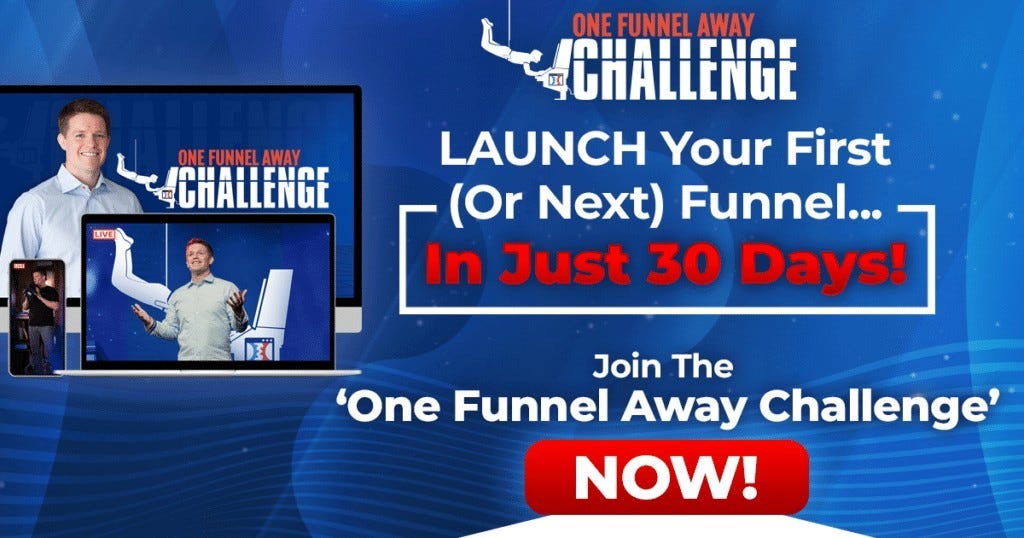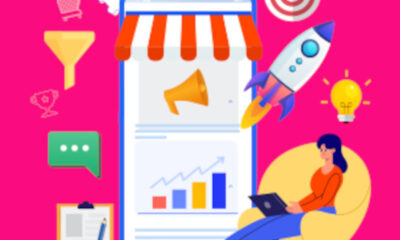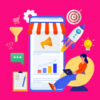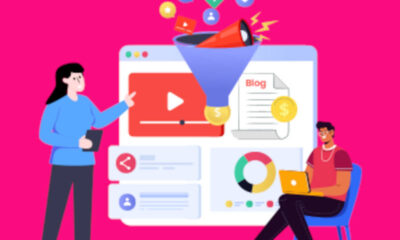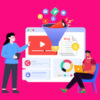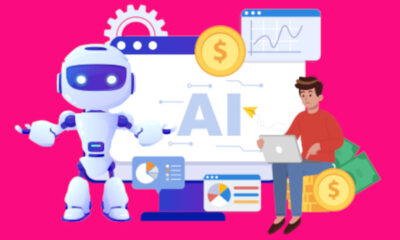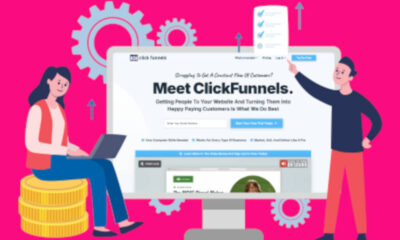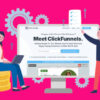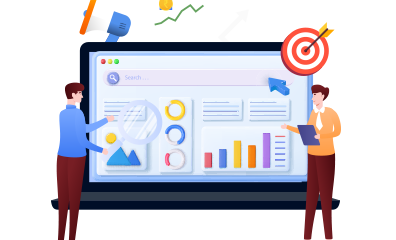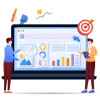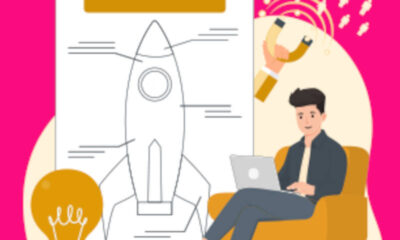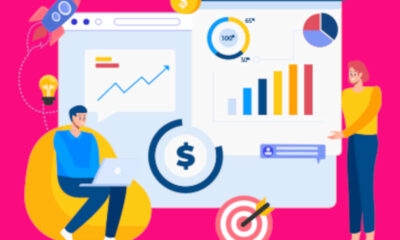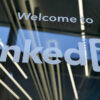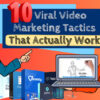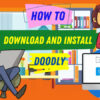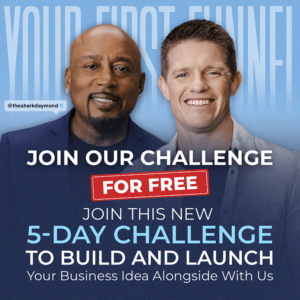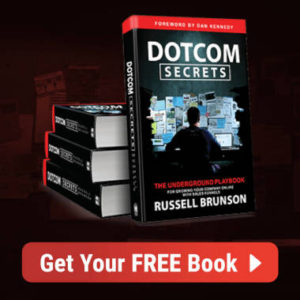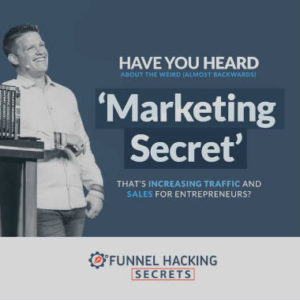Guides
5 Types Of Sales Funnels That Work Insanely Well
From Our friends at Clickfunnels.
You need a sales funnel that is specific to your type of business in order to be successful.
Today, we are going to introduce you to the most effective sales funnel of all: The Value Ladder.
We will share five different ways to sell your home. You can choose the one that is best for you.
Ready to grow your business faster than you ever thought possible?
Continue reading…
The Value Ladder Sales Funnel
We believe that the most effective way to sell anything online is the Value Ladder sales funnel.
It was created by our co-founder Russell Brunson who then used it to take ClickFunnels from zero to $10M+ in annual revenue in just one year (it’s at $100M+ now!).
This sales funnel has four stages:
- Bait. You offer the potential customer your lead magnet (a freebie) in exchange for their email address.
- Frontend. You offer the potential customer your least expensive and least valuable product or service.
- Middle. You offer the customer a more expensive and more valuable product or service.
- Backend. You offer the customer your most expensive and most valuable product or service.
Ideally, you also offer a continuity program of some sort, meaning, a subscription product that generates recurring revenue.
We also recommend adding downsells, upsells, and cross-sells to your core offers in order to maximize your revenue.

The reason why this sales funnel works so well is that it allows you to:
- Start the relationship with that person by offering free value.
- Nurture that relationship by continuing to provide free value via email.
- Build trust by providing progressively more paid value at each stage.
Here’s how Russell explains it:
The Top 5 Variations of the Value Ladder Sales Funnel
Now let’s take a look at the five most popular variations of the Value Ladder sales funnel:
Squeeze Page Funnel
A squeeze page funnel looks like this:
Page 1: A squeeze page.
Page 2: A thank you page.
A squeeze page is a basic landing page that has these three key elements:
- A headline that conveys what your free offer is all about.
- An email opt-in form where the potential customer can type in their email address. It can either be displayed immediately or shown once they click the call-to-action button.
- A call-to-action button that encourages the potential customer to get the lead magnet.
Usually, squeeze pages also feature additional elements such as a subheadline, extra copy, relevant images, etc.
Here’s an example of a simple, yet high-converting squeeze page that we are using to promote one of our lead magnets:
And here’s the thank you page:

A squeeze page funnel is the most basic variation of the Value Ladder sales funnel, so that’s what you should start with if you have never built a sales funnel before.
And don’t worry, with ClickFunnels software, you can build a squeeze page funnel in just a few minutes.
Reverse Squeeze Page Funnel
A reverse squeeze page funnel also looks like this:
Page 1: A squeeze page.
Page 2: A thank you page.
So what’s the difference between the regular squeeze page funnel and the reverse squeeze page funnel, then?
- A regular squeeze page funnel keeps the free value behind the opt-in wall.
- A reverse squeeze page funnel provides some free value right there on the squeeze page itself and then asks for the potential customer’s email address in exchange for more free value.
A squeeze page in a reverse squeeze funnel usually has a free video that the potential customer can watch without having to opt-in.
Then you ask for their email address in exchange for a free video that is related to the video they just watched.
The most direct way to get people interested in your product is to create a series of videos. Allow people to watch the first video without having to sign up for anything. Then, use the rest of the videos as a way to get people to sign up for more information about your product.
For example:
If you have lost weight and now want to help other people do the same, you can share your weight loss journey in your squeeze page video.
Then offer the potential customer a 30-day meal plan in exchange for their email address.
Note that the reverse squeeze page funnel will likely have a lower potential customer-to-lead conversion rate than the regular squeeze page funnel.
However, that’s not necessarily a bad thing, since the reverse squeeze page funnel will likely also bring in higher quality leads.
Survey Funnel
A survey funnel is a funnel that allows you to direct different people to different sales funnels from a single starting point.
It looks like this:
Page 1: A survey.
Page 2: A squeeze page based on the survey results.
Page 3: A thank you page based on the survey results.
We recommend this survey structure:
- Self-identifying question (general). Ask them who they are.
- Self-identifying question (subject-based). Ask them about the situation they are in.
- Self-declared level of skill. Ask them what is their skill level.
- The self-declared biggest challenge. Ask them what they are struggling with.
- Educate and clarify. Ask them what they are struggling with on a personal level.
- Random curiosity-based question. Ask them something that you are curious to learn about them.
The first question is called the “bucket question” because it determines which sales funnel that person will be directed to.
Survey funnels are a great solution for businesses that serve several distinct customer segments that require different sales messaging.
Product Launch Funnel
A product launch funnel is a sales funnel designed specifically for product launches (duh!).
It was created by the entrepreneur Jeff Walker who came up with the “sideways sales page” idea:
Instead of creating a super long sales page that takes ages to scroll through you can break it up into several pages that present the same information in a more digestible format.
Here’s what the product launch funnel looks like:
Page 1: A squeeze page.
Page 2: Video #1.
Page 3: Video #2.
Page 4: Video #3.
Page 5: Video #4.
Page 7: A product order page.
Page 8: An order confirmation page.
We recommend structuring the video sequence like this:
- Video #1: Position yourself as an authority, explain how this same opportunity changed your life, and show the potential customer how your product will make their life better. Then bring up objections that the potential customer might have and promise to answer them in the next video.
- Video #2: Answer the most common objections. Provide social proof by sharing case studies of previous customers. Then foreshadow the next video.
- Video #3: Express how excited you are that the potential customer has made it this far. Then take a step back, explain the big picture and help them visualize what your product can do for them. Then foreshadow the next video.
- Video #4: Open the doors. It’s time to make your offer available to potential customers. This page should have a “Buy” button below the video that will take them to the product order form.
You should space out these videos – send one every day or every other day.
Don’t make them all available immediately because that would beat the whole purpose of the product launch funnel.
Needless to say, this video sequence requires being good on camera, so if you are camera shy, this approach is not going to work for you.
In that case, we suggest using emails instead of videos, though that means that you will need to shorten the funnel to just three pages:
Page 1: A squeeze page.
Page 2: A product order page.
Page 3: An order confirmation page.
So instead of sending the potential customer emails with links to the videos, you build up the excitement about your product via email series instead.
And if you want to learn more about writing persuasive emails you can get a free copy of “Copywriting Secrets”.
Webinar Funnel
A webinar funnel is a sales funnel where you use a webinar as your lead magnet.
Here’s what it looks like:
Page 1: A webinar registration page.
Page 2: A thank you page.
Page 3: A webinar page.
Page 4: A product order page.
This sales funnel holds a special place in our hearts because that’s what Russell used to get ClickFunnels off the ground during our first year in business.
He would aim to do 5-7 webinars a week but sometimes he would end up doing 2-3 webinars a day. Pretty crazy but it worked!
Here are a few tips on how to create a high-converting webinar funnel:
- Provide a lot of free value. The word “webinar” is short for “web seminar”. It should be an educational event where you teach potential customers something valuable. So don’t treat it as a 45-minute sales pitch for your product. Make sure that even the attendees that decide not to purchase whatever it is that you are selling leave feeling that they have learned something.
- Use a proven script to transition into your sales pitch. Going from your presentation to a sales pitch can feel awkward. But it doesn’t have to be. Simply use this script:
- “So now I’d like to offer you guys something that I’m really excited about. It’s something that I think is going to change tons of lives and businesses for the better. But I don’t want to do it without your permission. If you guys want to learn more about [PRODUCT/SERVICE] then just type “Yes” in the chat bar.”
- if you followed the first tip and provided a lot of free value, the attendees will almost certainly want to hear what you have to say.
- And in case no one types “yes” in the chat, you can save the situation with this script:
- “Okay. Well, I don’t want to take up too much of your time. But I really think this is going to be a game-changer for you. Is it okay if I just spend 10 minutes showing you this offer I put together?”
- Should the worst happen and no one types “yes” even after your second attempt to get people to agree to the pitch, simply thank everyone for their time and end the webinar.
- That’s super awkward.
- But the bigger problem is that there must be something wrong with your presentation because this is not normal.
- So if your webinar falls flat, you need to figure out what went wrong, then go back to the drawing board and come up with something better.
- Note: These scripts only work for live webinars where attendees can react to what you are saying.
- Follow up! Russell, who is a great salesman, would typically convert between 20% and 30% of webinar attendees into paying customers. And that’s an amazing conversion rate!
But even if you get that conversion rate between 70% and 80% of your webinar attendees will leave without buying your product. And you know what? That’s okay.
Now that you have their email addresses, you can continue nurturing those relationships by providing free value via email.
That way, if those people are ever ready to invest in a solution to a problem that your product addresses, you will be the first person that comes to their minds.
So don’t just end your webinar and leave it at that. Make sure to follow up!
Also, if you want to learn more about growing your online business via webinar funnels, check out the “Perfect Webinar Secrets” where Russell shares a proven framework for that:
Russell’s Top 7 Funnel Hacks
Here are Russell’s top seven funnel hacks that can help you increase your conversion rates, revenue, and profit:
- Add more curiosity to your squeeze page headlines. You want to provide just enough information to pique the potential customer’s curiosity so that they would feel compelled to check out your lead magnet. But don’t give everything away in your headline – if you provide too much information, they’ll think that they already have it all figured out and move on.
- Have a lead magnet. All sales funnels that we have discussed in this article include a lead magnet so we hope that you already understand the importance of offering a freebie in exchange for the potential customer’s email address. But you’d be surprised how many businesses out there are missing this essential ingredient of a successful sales funnel.
- Build your sales pages for maximum conversions. Your sales page should start with an appeal to emotion, followed by an appeal to logic, followed by an appeal to fear (implement the principle of scarcity). All three elements need to be present, in that order, for maximum conversions.
- Add an order form bump. A bump offer is an offer that you present to the potential customer after they put in their credit card information but before they finalize the purchase. It should be priced within an impulse buy range and need no explanation. For example, if you are selling a book, you can add an audiobook bump offer.
- Keep the buying loop open to identify hyper-active buyers. The best time to present a potential customer with an offer is when they are already in the process of buying. So when someone decides to buy your product, you want to keep offering them upsells until they finalize the purchase. Don’t end the buying loop yourself, let them end it instead.
- Create an “offer wall” to ascend buyers up your Value Ladder. This might be surprising but sometimes people just want to keep shopping so they start browsing the Internet for something else to buy. Why lose that traffic when you could direct it to your other offers instead? An “offer wall” is a page that presents a catalog of your various offers so that the customer could continue exploring your product line.
- Add a webinar to the thank you page to increase sales. When a potential customer subscribes to your email list to get your lead magnet, use the thank you page to invite them to attend a free webinar. Then pitch them your product at the end of that event.
Check out this video where Russell goes through these hacks one by one and provides examples for each of them:
Want Russell To Show You How To Build Your First Sales Funnel?
Let’s keep it real:
Building a sales funnel from scratch can seem like a daunting task.
That’s why we created our 5-Day Challenge where Russell walks you through it step-by-step.
You will learn how to:
- Generate unlimited leads.
- Create your first lead magnet.
- Build your first sales funnel.
- Create a simple 6-email follow-up sequence.
- And launch your funnel!
…in just five days.
So don’t hesitate.
Click the link below if you’re ready for the next step — to build your high-converting sales funnel that will make the most of your marketing efforts!
>>>Launch Your First (Or Next) 7 Figure Funnel In 10 Minutes Or less!
>>>Join The One Funnel Away Challenge<<<



